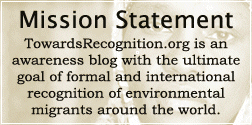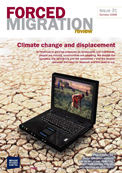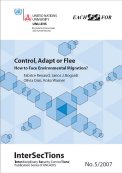(The Asian Development Bank) The ADB is taking a leadership role in helping Asia ang the Pacific to mitigate the causes – and adapt to the consequences – of climate change. As part of this ongoing effort, ADB is undertaking the first international project designed to generate policy options for addressing climate-induced migration.
Contributing to Understanding Climate-induced Migration
Solid analysis and greater knowledge development and sharing on climate-induced migration are essential to inform policy makers of the issues at stake.
The ADB project, “Policy Options to Support Climate-induced Migration [ PDF ],” is sponsoring a range of activities, including:
* Formulation of country and sub-regional studies that consider past experience and future planning for climate-induced migration.
* Dialogues and workshops with experts and stakeholders concerned with
climate-induced migration.
* National and international policy options and ways to finance them.
* A range of communications drawing attention to climate-induced migration and the choices that decision makers
face in the period ahead.
The ADB project will improve the understanding of climate-induced migration, and stimulate policy debate on how to tackle the anticipated movement of millions of people due to changing weather patterns in the coming years. The ultimate aim is to encourage the adoption of responsible, foresighted policies and practices that improve management of human displacement due to climate change, and where practical, enable communities to stay where they are.
Asia and the Pacific: At the Center of Change
Confronting the challenges imposed when families and communities are uprooted and forced to migrate as a consequence of extreme weather events requires government policy that both mitigates risks and creates opportunities for affected people. This means not only looking at ways to reduce human suffering and economic loss as a consequence of disasters, but to also provide people living in precarious locations with a better chance of enjoying a sustainable livelihood with access to food, water and social services.
The number of extreme weather events is increasing. Asia and the Pacific is the region at the epicenter of weather disasters. Those most vulnerable to climate-induced migration are the poor and marginalized.
While large-scale climate-induced migration is a gradual phenomenon, communities in Asia and the Pacific are already experiencing the consequences of changing environmental conditions including eroding shorelines, desertification and more frequent severe storms and flooding.
Source: The Asian Development Bank



